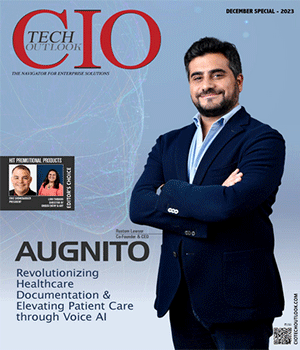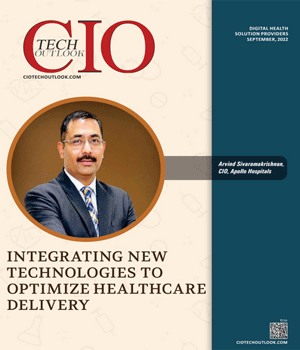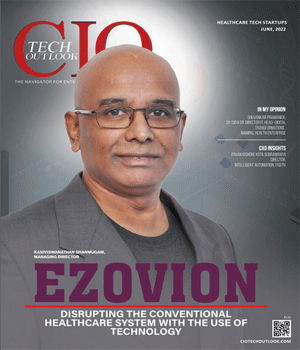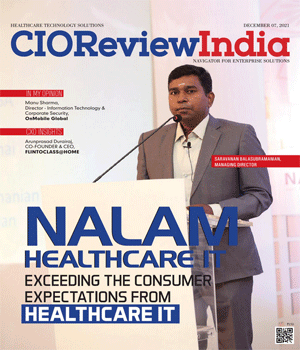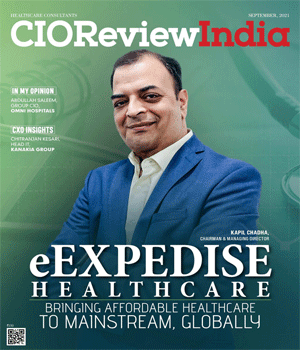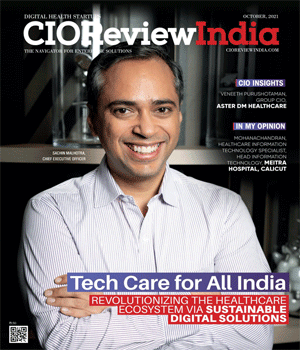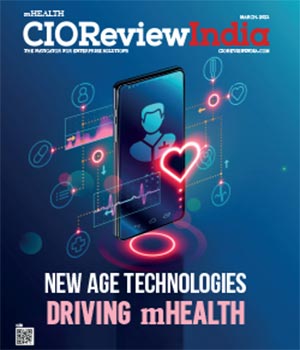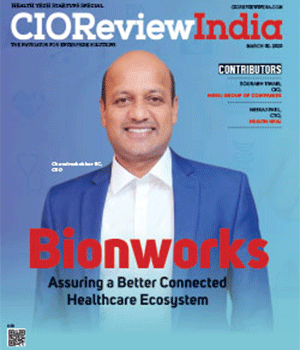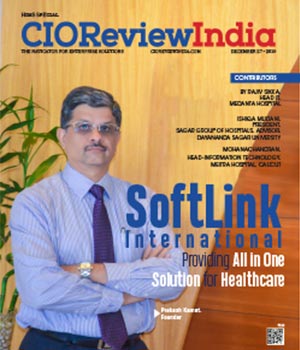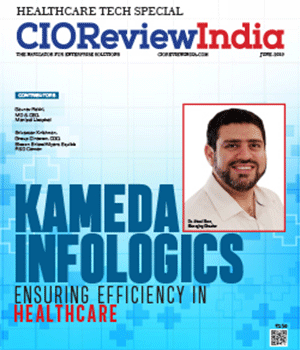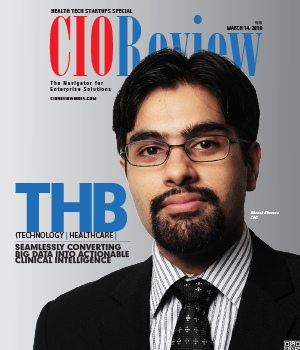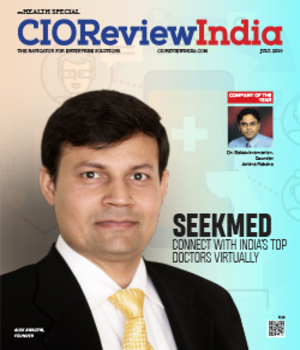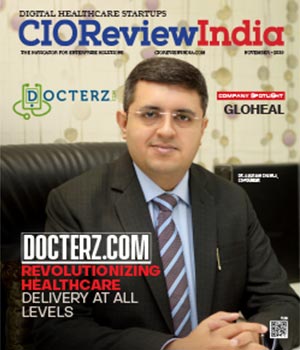
Healthcare Analytics - Roadmap for Success
Vijay Venkatesan, Chief Data Officer, Providence Health & Services | Thursday, 15 February 2018, 10:53 IST
 Healthcare is going through unprecedented changes—both from a delivery system operations and disruptive technology perspective. The most notable trend is the emergence of digital health startups that are disrupting the marketplace. Many of them are focused on leveraging predictive analytics and data science in their models to create a more comprehensive set of services. Information on-demand with the right data, at the right place, at the right time, in healthcare is the new normal.
Healthcare is going through unprecedented changes—both from a delivery system operations and disruptive technology perspective. The most notable trend is the emergence of digital health startups that are disrupting the marketplace. Many of them are focused on leveraging predictive analytics and data science in their models to create a more comprehensive set of services. Information on-demand with the right data, at the right place, at the right time, in healthcare is the new normal.
Healthcare providers are sitting on a wealth of data that has been collected for patients, and which could be used to improve the patient’s experience and clinical outcomes. Organizations that leverage data effectively to optimize patient experience will have a distinct competitive advantage. This challenge only increases as the amount of data explodes, and as we add a myriad of information types: structured, semi-structured, and unstructured.
How Can Healthcare Enterprises Leverage Analytics For the Future?
Focusing on data and technology exclusively is not the answer. What is required is a non-linear approach that incorporates culture, technology, and people in a value-enabling model.
Culture
Making the switch over to a healthcare analytics culture is a slow and deliberate process. In others words, it is more evolutionary than a revolutionary process. However, when successfully implemented, it accomplishes several things. First, it reduces the amount of data silos in an organization, as well as prevents conflicts over data ownership. Secondly, it reduces “information monarchy” and allows a collaborative and inquisitive atmosphere to take shape—“information democracy”—the perfect environment for effective synergy. Lastly, the shift would help organizations stop focusing on the past, but rather help them focus on the future.
One may be surprised to find out that information management in a healthcare analytics culture is NOT just an IT project. Rather, it is an enterprise-wide change, with each part of the enterprise playing a key role in the culture. Tackling an analytics project like an IT project will result in dissatisfied customers, unrealistic goals, and poor management methods that simply aren’t compatible with an analytics culture. Organizations are embarking on an analytics journey to continually identify, prioritize, and actively communicate strategic objectives and these should be specific, measurable, achievable and timely to be successful.
Technology
The future will require a new data paradigm to enable viability in times of shrinking reimbursement and accountable care. We will need to use data to precisely target the resources we have, to the patient, account, or appointment where they will make the biggest difference. We will need to integrate disparate data sources to answer complex questions and take immediate action. We will need to seamlessly include prediction and natural language processing in our products to form a complete view of what exists and what’s coming next. We have to engage our customers where they are, rather than where we traditionally were.
Realizing this vision requires the healthcare industry—that has been late to adopting big data and advanced analytics—to explore advances in newer technologies. Providence St. Joseph Health (PSJH) is leveraging big data technologies to leverage data as a strategic asset and to make it more actionable for our leaders and caregivers. To achieve this strategy, they are launching “myHIway,” a Google-like search engine and set of digital apps.
With “myHIway,” they are simplifying the way their users will find answers for business needs. The same way Amazon makes it easy to shop and Google makes it simple to search, myHIway will change the way their users find the information they need. The platform is vendor- and team-agnostic, allowing content to be provided by internal or external partners.
These types of capabilities will help organizations get to insights faster, increase the effectiveness and efficiency of health care delivery system. With the recent advancements in technology, organizations must upgrade their information infrastructure, explore hybrid models—cloud-based models and on-premise—for scalability and flexibility and integrate big data analytics into the electronic health record. Focused commitment to transitioning from a retrospective to a prospective and prescriptive analytics will demonstrate a true commitment to analytics.
People
Yes, the right data culture and big data infrastructure and robust big data analytical capabilities are critical for success. But the human element is more likely to be the difference maker. Gartner research reveals that a strategy gap and skill-set shortage are top impediments for organizations adopting big data. A strong data organization, with the right skills, knowledge, and experience is the foundation for success. Some key skills that are essential ingredients for success are as follows:
•Business and operational subject matter experts with an analytical bent
• Data Engineering: software design, connections, database design
• Data Science: predictive modeling, domain expertise, statistical fluency
• Data Journalism: visualization, UI, executive communication
• Complex Project Management
In addition, growing analytics demand and technology evolution are driving lines of businesses and IT departments to shift to a managed service model to address the challenges of acquiring and keeping the big data skills up to date.
How to Get Started on a Big Data Journey?
To align culture, technology, and people, it is important that we identify the right use cases, where big data could be a differentiator. Understanding architecture drives, such as speed and complexity of analysis, variety and volume of data are good candidates for big data. Following is a simple approach for success:
• Identify high value opportunities by working with a multi-disciplinary team
• Establish the right architecture and funding model
• Prove business value through proof-of-concepts and pilots with strategic partnerships
• Lift and spread by adding additional use cases
• Transform to a data driven culture
Transforming to a data driven culture is a complex one, but organizations that are embarking on big data and advanced analytics journey should consider the intersection of the three forces outlined above. And big data has the potential to transform areas of performance management and enable an action based culture. That’s why cultures built on big data and advanced analytics are increasingly becoming high-performance organizations.
CIO Viewpoint
Integrating New Technologies to Optimize...
By Abhrasnata Das
Quantum Shift in Healthcare Driven by...
By Abhrasnata Das
Product Adoption: Realizing The Real Value
By Ashish Pandey, CIO, GSK Consumer Healthcare India
CXO Insights
HIT Promotional Products: Fostering Empowerment...
By Eric Shonebarger, President & Lori Thibado, Director of Order Entry & Art
Addressing the Data Management Challenges in...
By Richa Singh
Elevating Patient Experience with Remote...


